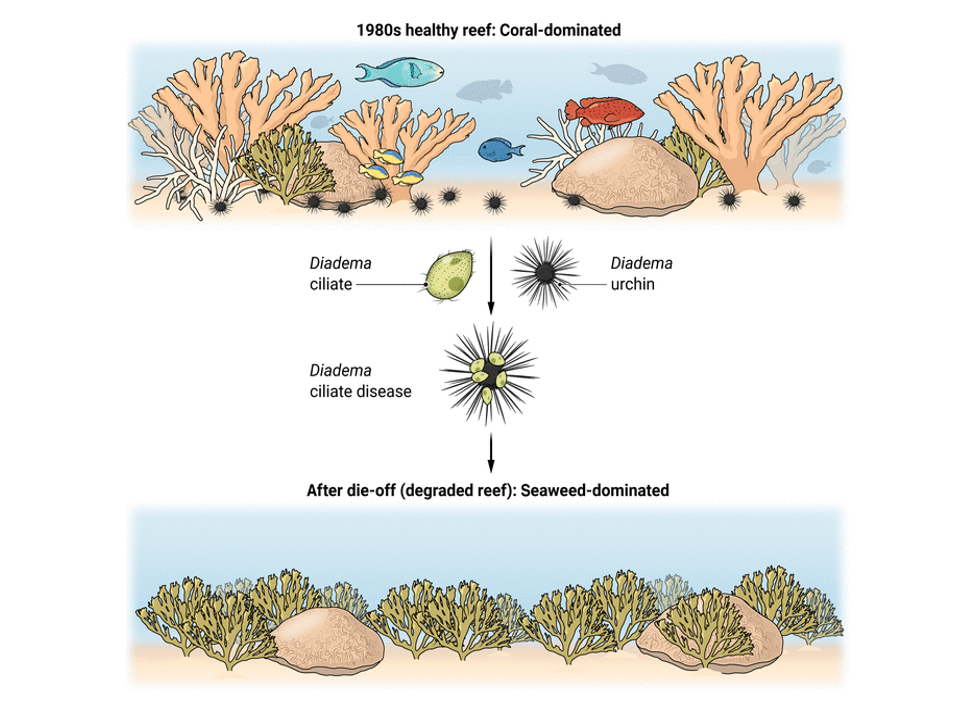Over the five last years, humanity has faced a new catastrophic pandemic with Covid-19. However, humans are not the only species to suffer from pandemics, and the impact of one pandemic is not limited to the species that it affects because of particular functions species fulfill within ecosystems. As such, a species extirpation following a pandemic event can have profound consequences on an entire ecosystem. A good example of such cascading effects is the mass urchin die-off that occurred in the Caribbean in the 1980’s.
Decades of overfishing have depleted herbivorous fish populations, which were predominantly responsible of the function of herbivory, alongside of other organisms, such as sea urchins. However, between 1983 and 1984, an unknown disease led to a mass mortality of the long-spined sea urchin (Diadema antillarum) across the Caribbean region, reducing populations up to 98% [1]. Therefore, in the absence of sufficient levels of herbivory, algae have progressively colonised the substrate, at the expense of hard corals, changing coral reefs’ Caribbean seascape [2].
Following these results, it is critical to understand the conditions that favour the development of ciliate in marine ecosystems and how its spreads from one site to another. Such knowledge will be vital for the implementation of appropriate management measures to increase sea urchin populations, restore the function of herbivory on Caribbean coral reefs, and potentially support the increase of hard coral cover across the region. To measure the efficiency of such management measures, and redirect them, if necessary, coral reef monitoring must be put in place. The Global Coral Reef Monitoring Network (GCRMN) supports the implementation of coral reef monitoring programs by providing recommendations on data acquisition and data management, and by producing syntheses on status and trends of coral reefs of the world.
You can read and download the “Status of Coral Reefs of the World: 2020” report, including the individual Caribbean region chapter here.

References
(1) Lessios, 1988. Mass Mortality of Diadema antillarum in the Caribbean: What Have We Learned? Annual Review of Ecology and Systematics.
(2) Souter, D., Planes, S., Wicquart, J., Logan, M., Obura, D., Staub, F. (eds) (2021). Status of coral reefs of the world: 2020 report. Global Coral Reef Monitoring Network (GCRMN) and International Coral Reef Initiative (ICRI). DOI:10.59387/WOTJ9184
(3) Levitan et al., 2023. Sea urchin mass mortalities 40 y apart further threaten Caribbean coral reefs. Proceedings of the National Academy of Sciences.
(4) Hewson et al., 2023. A scuticociliate causes mass mortality of Diadema antillarum in the Caribbean Sea. Science Advances.
(5) Thurber and Hay, 2023. Mystery solved: Disease detectives identify the cause of a mass die-off in the sea. Science Advances.





